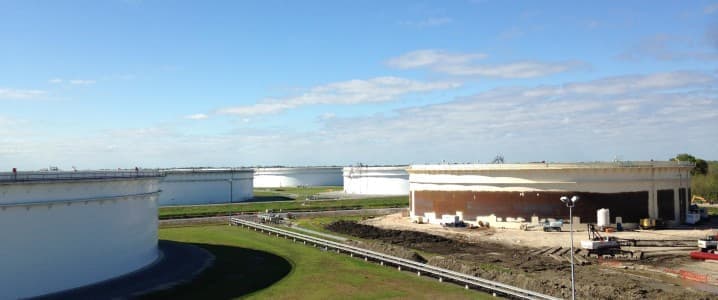Oil & Gas
TEXAS DEEPWATER OIL EXPORT PROJECTS STALL.
Irene Jerry

Before the 2020s, four offshore projects were in the works near Texas. These plans, however, were derailed by a series of crises that rocked the oil industry, reshaping the flow of oil trade. Despite initial plans, only one project has obtained approval from the U.S. Administration. Yet, uncertainty looms over its future, as it struggles to secure long-term customer commitments or partners needed for a final investment decision.
Recently, the United States Maritime Administration (MARAD) granted the first deepwater port license for the Sea Port Oil Terminal (SPOT) to Enterprise Products Partners. Located about 30 nautical miles off Brazoria County, Texas, in 115 feet of water, SPOT is designed to load very large crude carriers (VLCCs) and other oil tankers at a rate of 85,000 barrels per hour. However, challenges persist, including the withdrawal of support from major players like Chevron and Enbridge, and difficulties in securing necessary partners and commitments.
The slowdown in U.S. crude oil production growth, coupled with shifting global oil flows, has further complicated matters. Plans for deepwater ports off the Texas coast, intended to accommodate supertankers, have been stalled. Despite initial optimism from Chevron about expanding export capacity, delays in license approvals and a lack of long-term commitments have hindered progress. Additionally, high loading fees and a shift in U.S. oil exports towards Europe, where smaller tankers are preferred, have contributed to the challenges faced by these projects.
The situation is exacerbated by the current geopolitical landscape. With Europe emerging as the largest buyer of U.S. crude oil, following sanctions on Russia over its invasion of Ukraine, the focus has shifted away from Texas offshore ports. This shift has been reflected in record U.S. crude oil exports to Europe, which averaged 1.8 million barrels per day in 2023, surpassing exports to Asia and Oceania. As such, the future of deepwater port projects off the Texas coast remains uncertain, highlighting the complexities of the evolving global oil trade landscape.
